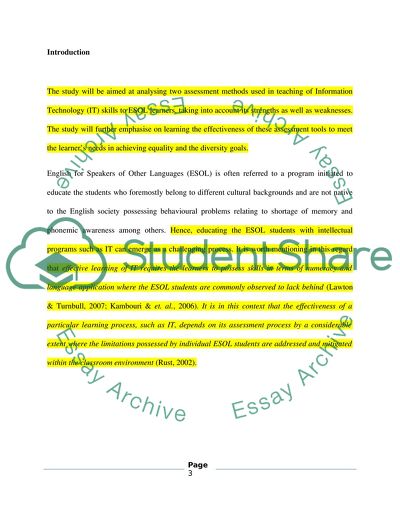Cite this document
(Methods used in Teaching of Information Technology Essay Example | Topics and Well Written Essays - 1250 words - 1, n.d.)
Methods used in Teaching of Information Technology Essay Example | Topics and Well Written Essays - 1250 words - 1. https://studentshare.org/education/1793611-assessment-analysis
Methods used in Teaching of Information Technology Essay Example | Topics and Well Written Essays - 1250 words - 1. https://studentshare.org/education/1793611-assessment-analysis
(Methods Used in Teaching of Information Technology Essay Example | Topics and Well Written Essays - 1250 Words - 1)
Methods Used in Teaching of Information Technology Essay Example | Topics and Well Written Essays - 1250 Words - 1. https://studentshare.org/education/1793611-assessment-analysis.
Methods Used in Teaching of Information Technology Essay Example | Topics and Well Written Essays - 1250 Words - 1. https://studentshare.org/education/1793611-assessment-analysis.
“Methods Used in Teaching of Information Technology Essay Example | Topics and Well Written Essays - 1250 Words - 1”. https://studentshare.org/education/1793611-assessment-analysis.


